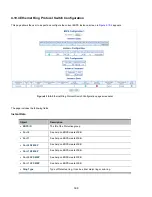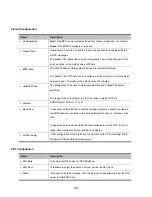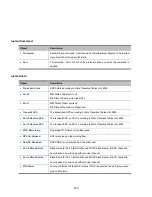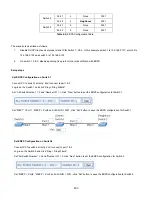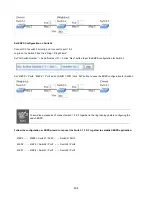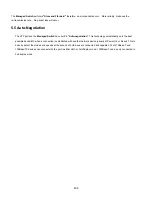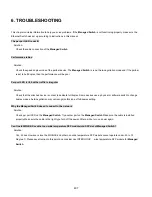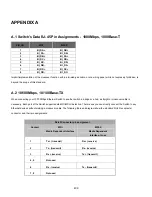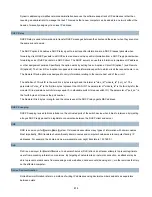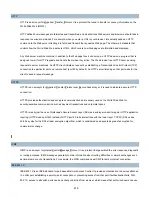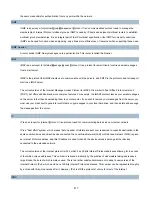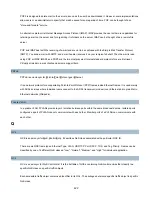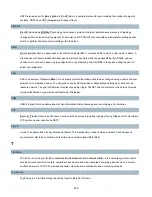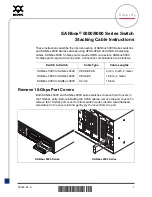
412
incremented. See the Web page help text for each specific port property.
ACL|Rate Limiters
: Under this page you can configure the rate limiters. There can be 15 different rate limiters, each
ranging from 1-1024K packets per seconds. Under "Ports" and "Access Control List" web-pages you can assign a Rate
Limiter ID to the ACE(s) or ingress port(s).
AES
AES is an acronym for
A
dvanced
E
ncryption
S
tandard. The encryption key protocol is applied in 802.1i standard to
improve WLAN security. It is an encryption standard by the U.S. government, which will replace DES and 3DES. AES
has a fixed block size of 128 bits and a key size of 128, 192, or 256 bits.
AMS
AMS is an acronym for
A
uto
M
edia
S
elect. AMS is used for dual media ports (ports supporting both copper (cu) and fiber
(SFP) cables. AMS automatically determines if a SFP or a CU cable is inserted and switches to the corresponding media.
If both SFP and cu cables are inserted, the port will select the prefered media.
APS
APS is an acronym for
A
utomatic
P
rotection
S
witching. This protocol is used to secure that switching is done
bidirectional in the two ends of a protection group, as defined in G.8031.
Aggregation
Using multiple ports in parallel is to increase the link speed beyond the limits of a port and to increase the redundancy for
higher availability.
(Also
Port
Aggregation
, Link Aggregation
).
ARP
ARP is an acronym for
A
ddress
R
esolution
P
rotocol. It is a protocol that used to convert an IP address into a physical
address, such as an Ethernet address. ARP allows a host to communicate with other hosts when only the Internet
address of its neighbors is known. Before using IP, the host sends a broadcast ARP request containing the Internet
address of the desired destination system.
ARP Inspection
ARP Inspection is a secure feature. Several types of attacks can be launched against a host or devices connected to
Layer 2 networks by "poisoning" the ARP caches. This feature is used to block such attacks. Only valid ARP requests
and responses can go through the switch device.
Auto-Negotiation
Auto-negotiation is the process where two different devices establish the mode of operation and the speed settings that
can be shared by those devices for a link.
Summary of Contents for NS4750-24S-4T-4X
Page 1: ...NS4750 24S 4T 4X User Manual P N 1702826 REV 00 01 ISS 14JUL14 ...
Page 56: ...56 Figure 4 2 7 Privilege Levels Configuration Page Screenshot ...
Page 110: ...110 Figure 4 4 6 Mirror Configuration Page Screenshot ...
Page 117: ...117 Figure 4 5 4 LACP Port Configuration Page Screenshot ...
Page 174: ...174 Figure 4 7 10 MST1 MSTI Port Configuration Page Screenshot ...
Page 180: ...180 Figure 4 8 2 Multicast Flooding ...
Page 249: ...249 Figure 4 9 18 Voice VLAN Configuration Page Screenshot ...
Page 271: ...271 Counter Counts the number of frames that match this ACE ...
Page 281: ...281 Figure 4 11 4 Network Access Server Configuration Page Screenshot ...
Page 315: ...315 ...
Page 328: ...328 ...
Page 335: ...335 ...
Page 346: ...346 Figure 4 14 1 LLDP Configuration Page Screenshot ...
Page 350: ...350 Figure 4 14 2 LLDP MED Configuration Page Screenshot ...
Page 372: ...372 Figure 4 16 1 Loop Protection Configuration Page Screenshot ...

